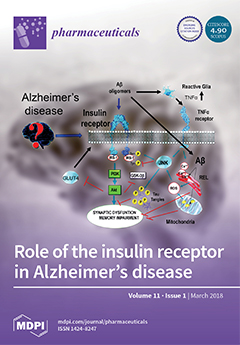Five known porphyrins, 5,10,15,20-
tetrakis(
p-tolyl)porphyrin (TTP), 5,10,15,20-
tetrakis(
p-bromophenyl)porphyrin (TBrPP), 5,10,15,20-
tetrakis(
p-aminophenyl)porphyrin (TAPP), 5,10,15-
tris(tolyl)-20-mono(
p-nitrophenyl)porphyrin (TrTMNP), 5,10,15-
tris(tolyl)-20-mono(
p-aminophenyl)porphyrin (TrTMAP), and three novel porphyrin derivatives, 5,15-di-[
bis(3,4-ethylcarboxymethylenoxy)phenyl]-10,20-di(
p-tolyl)porphyrin
[...] Read more.
Five known porphyrins, 5,10,15,20-
tetrakis(
p-tolyl)porphyrin (TTP), 5,10,15,20-
tetrakis(
p-bromophenyl)porphyrin (TBrPP), 5,10,15,20-
tetrakis(
p-aminophenyl)porphyrin (TAPP), 5,10,15-
tris(tolyl)-20-mono(
p-nitrophenyl)porphyrin (TrTMNP), 5,10,15-
tris(tolyl)-20-mono(
p-aminophenyl)porphyrin (TrTMAP), and three novel porphyrin derivatives, 5,15-di-[
bis(3,4-ethylcarboxymethylenoxy)phenyl]-10,20-di(
p-tolyl)porphyrin (DBECPDTP), 5,10-di-[
bis(3,4-ethylcarboxymethylenoxy)phenyl]-15,20-di-(methylpyrazole-4-yl)porphyrin (cDBECPDPzP), 5,15-di-[
bis(3,4-ethylcarboxymethylenoxy)phenyl]-10,20-di-(methylpyrazole-4-yl)porphyrin (DBECPDPzP), were used to study their interaction with protein targets (in silico study), and were synthesized. Their cytotoxic activities against cancer cell lines were tested using 3-(4,5-dimetiltiazol-2-il)-2,5-difeniltetrazolium bromide (MTT) assay. The interaction of porphyrin derivatives with carbonic anhydrase IX (CAIX) and REV-ERBβ proteins were studied by molecular docking and molecular dynamic simulation. In silico study results reveal that DBECPDPzP and TrTMNP showed the highest binding interaction with REV- ERBβ and CAIX, respectively, and both complexes of DBECPDPzP-REV-ERBβ and TrTMNP-CAIX showed good and comparable stability during molecular dynamic simulation. The studied porphyrins have selective growth inhibition activities against tested cancer cells and are categorized as marginally active compounds based on their IC
50.
Full article






